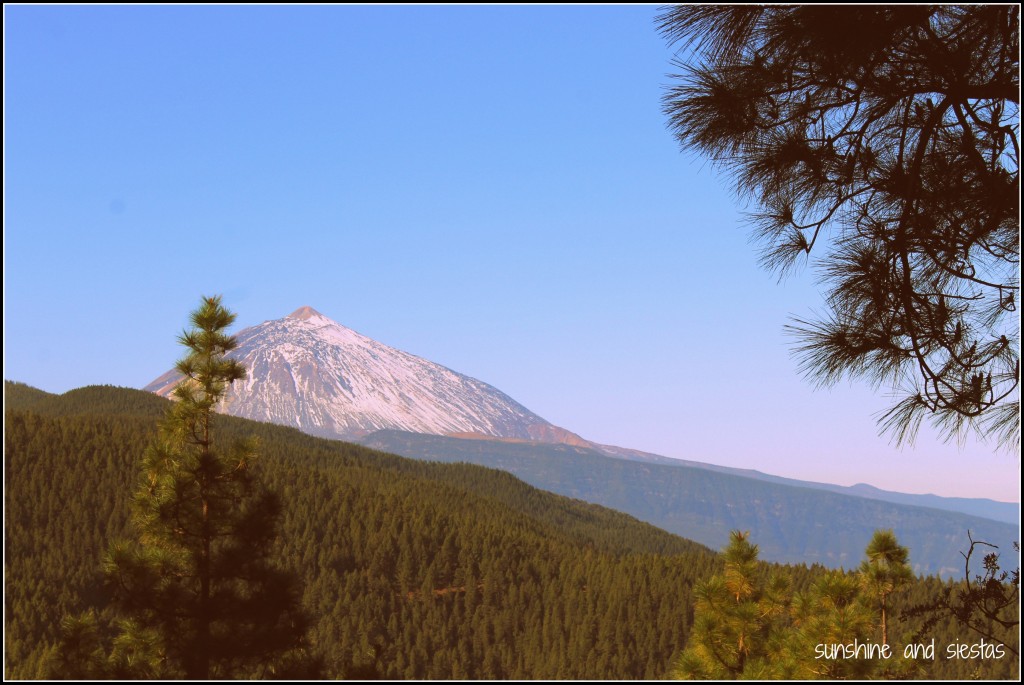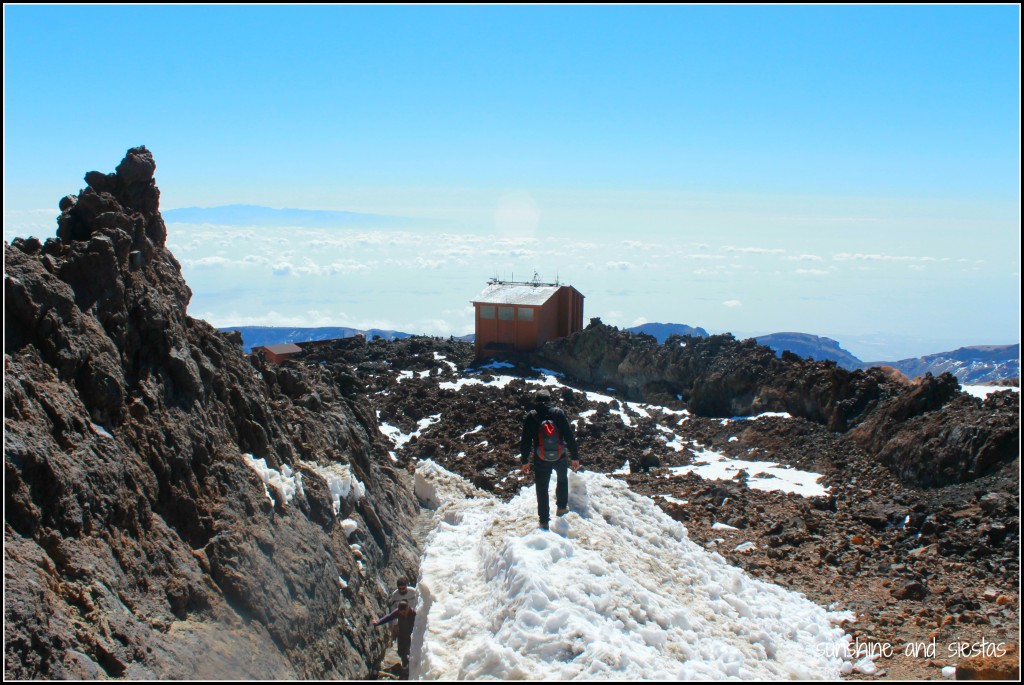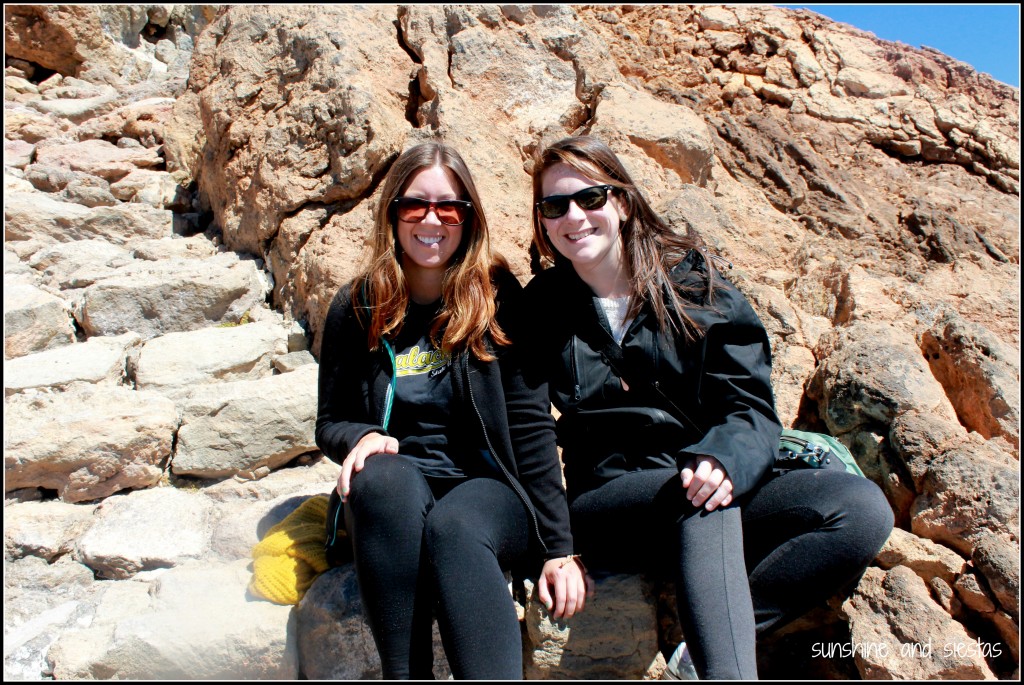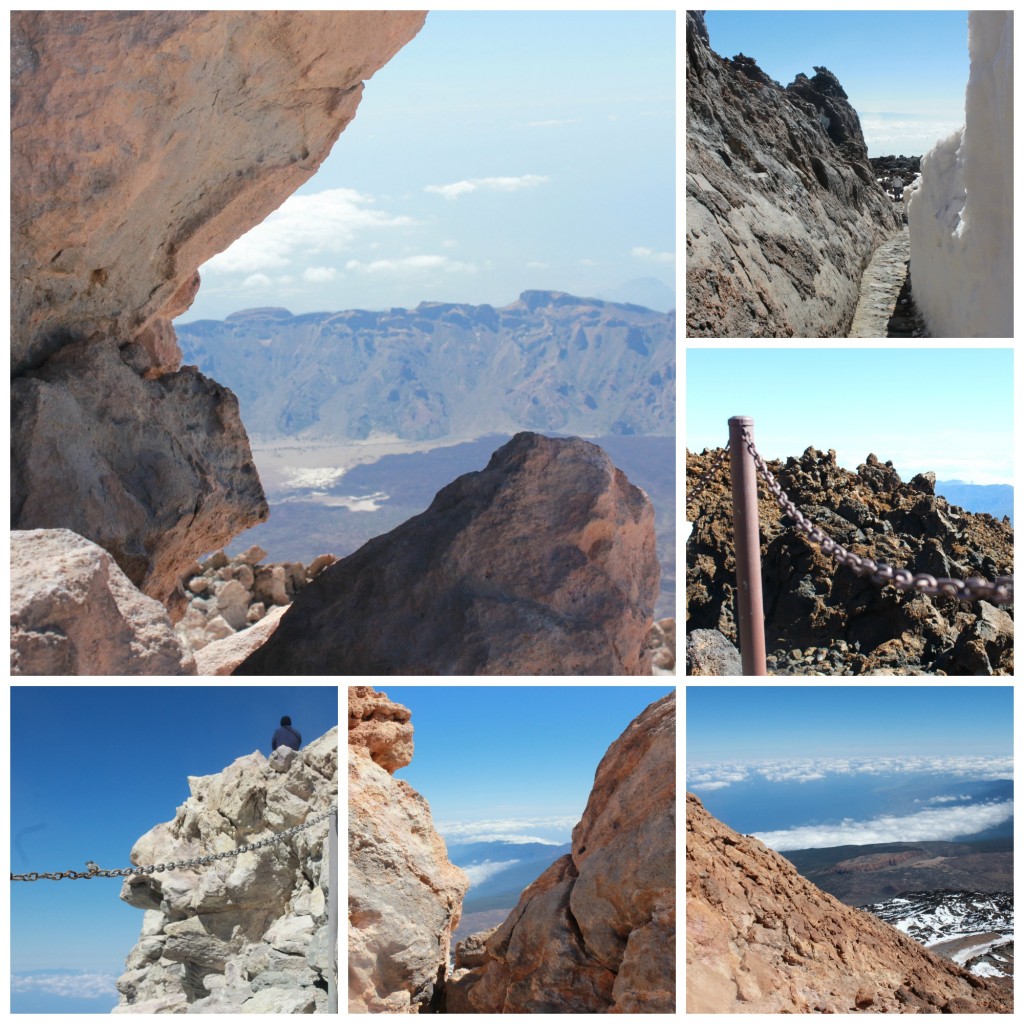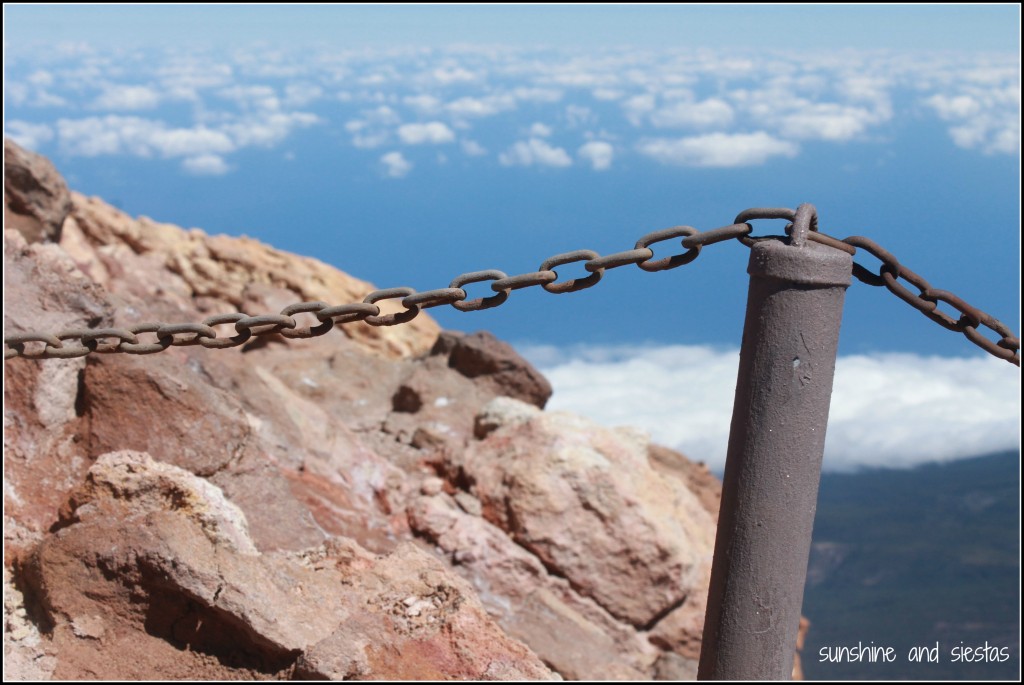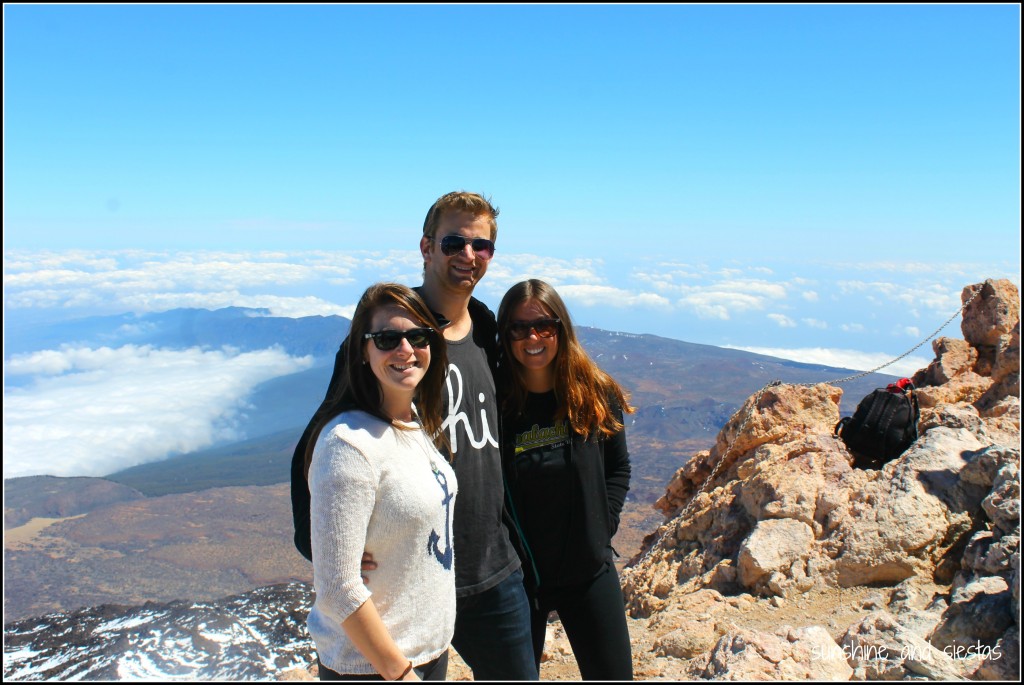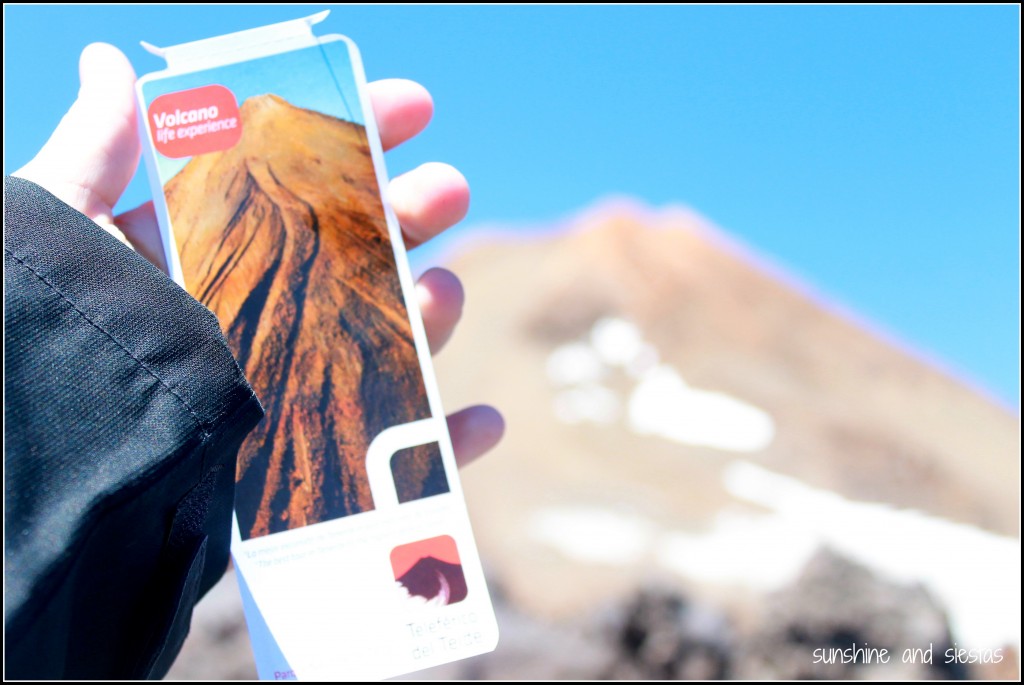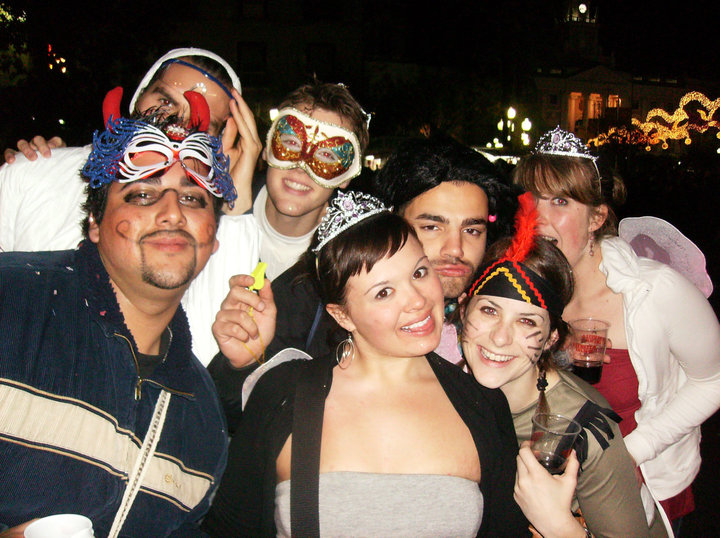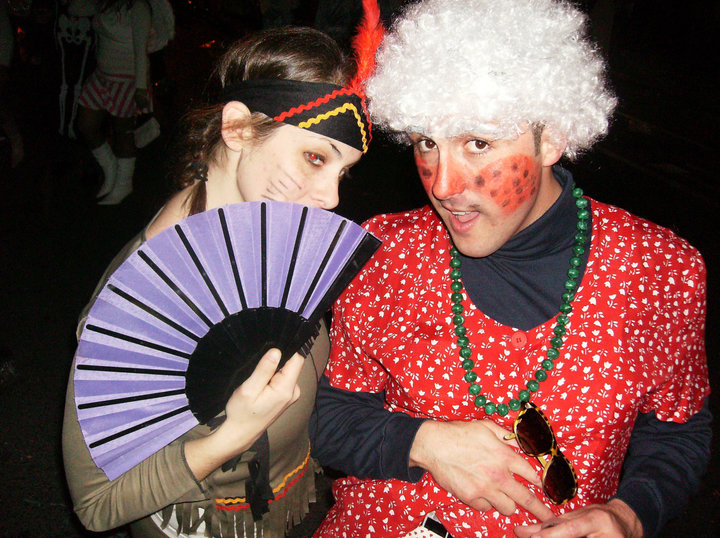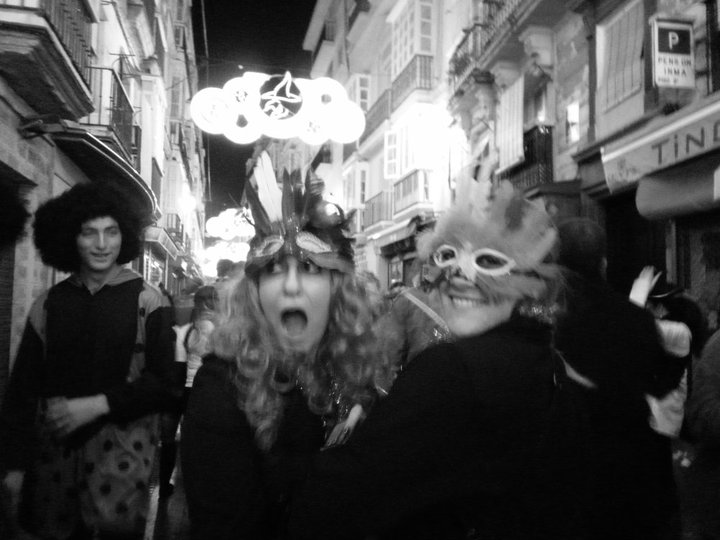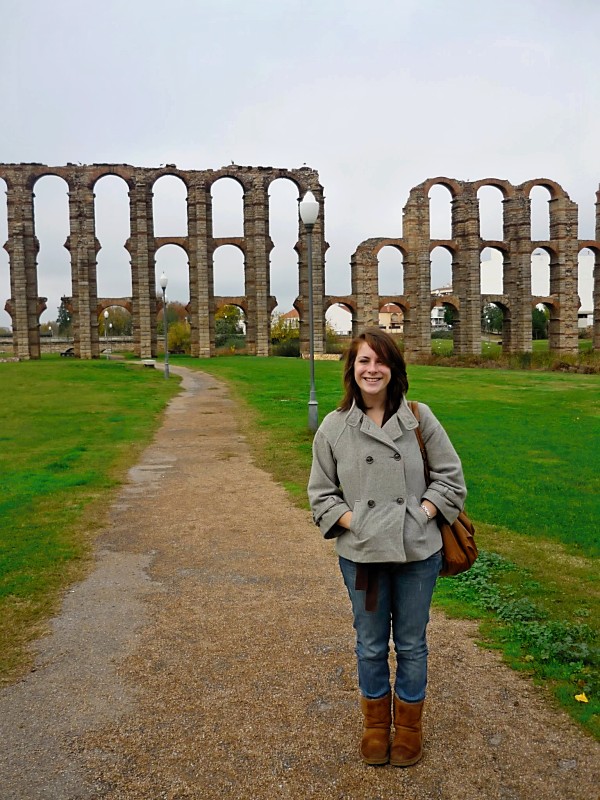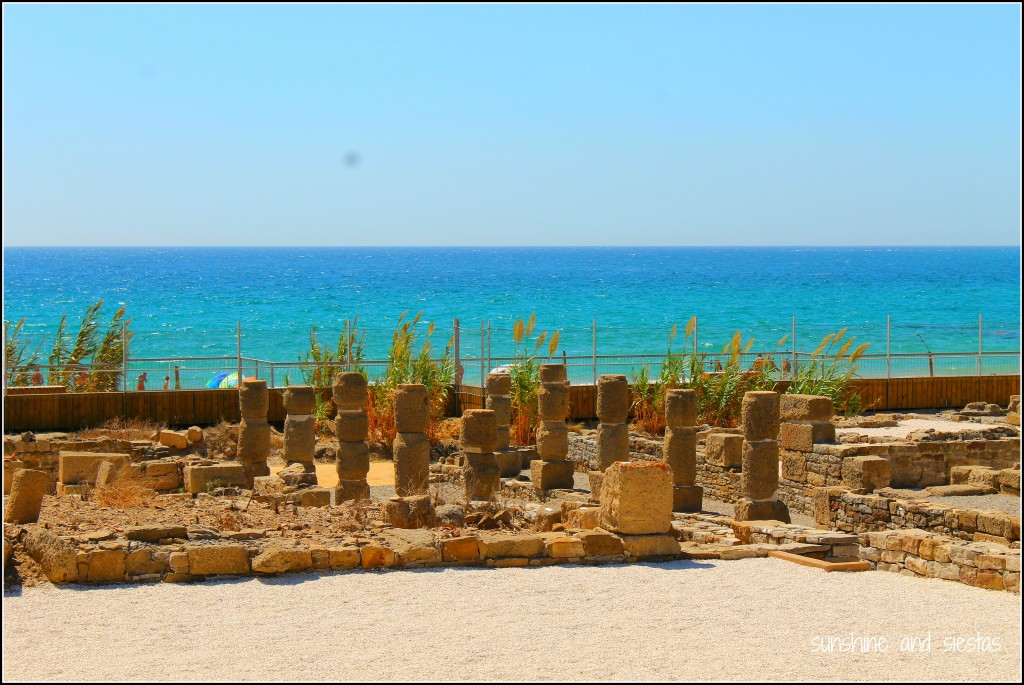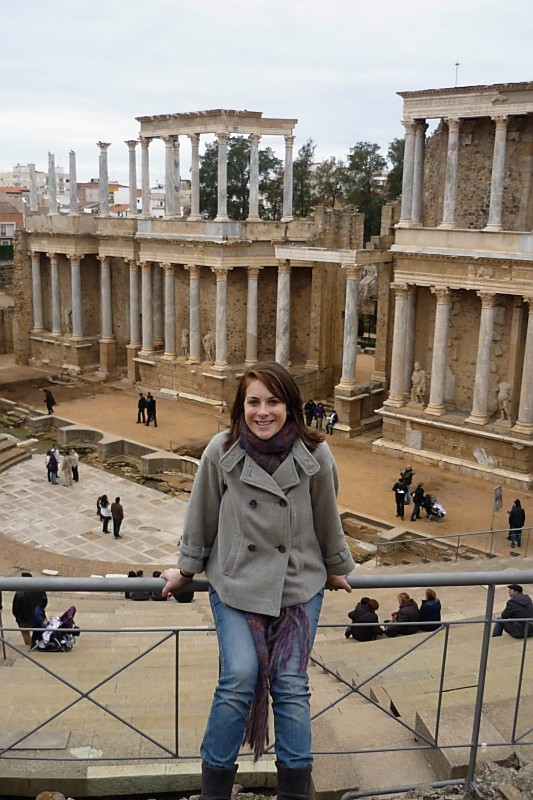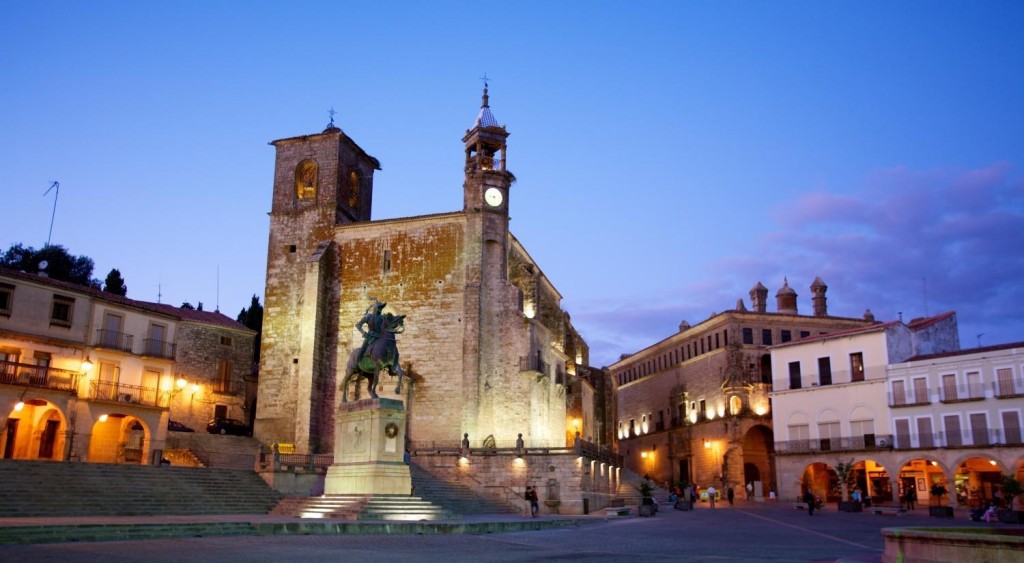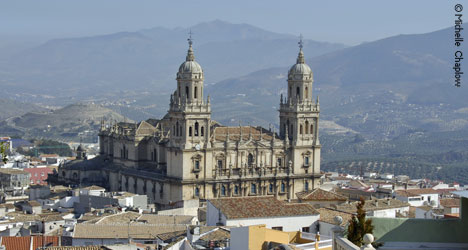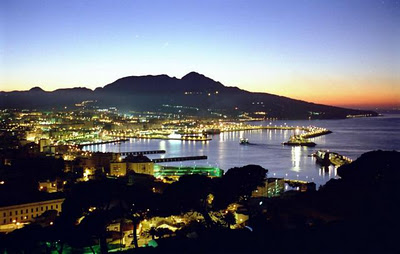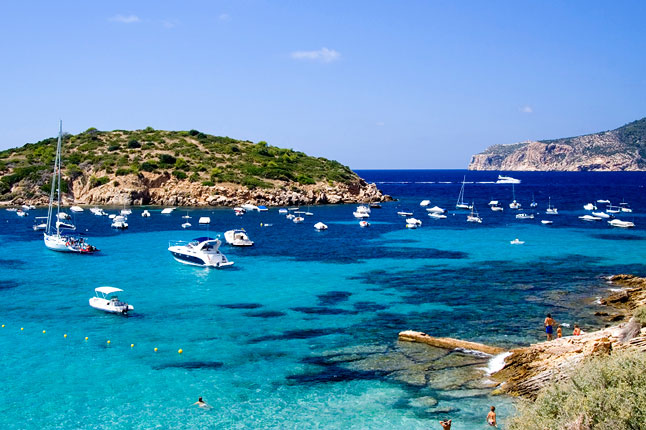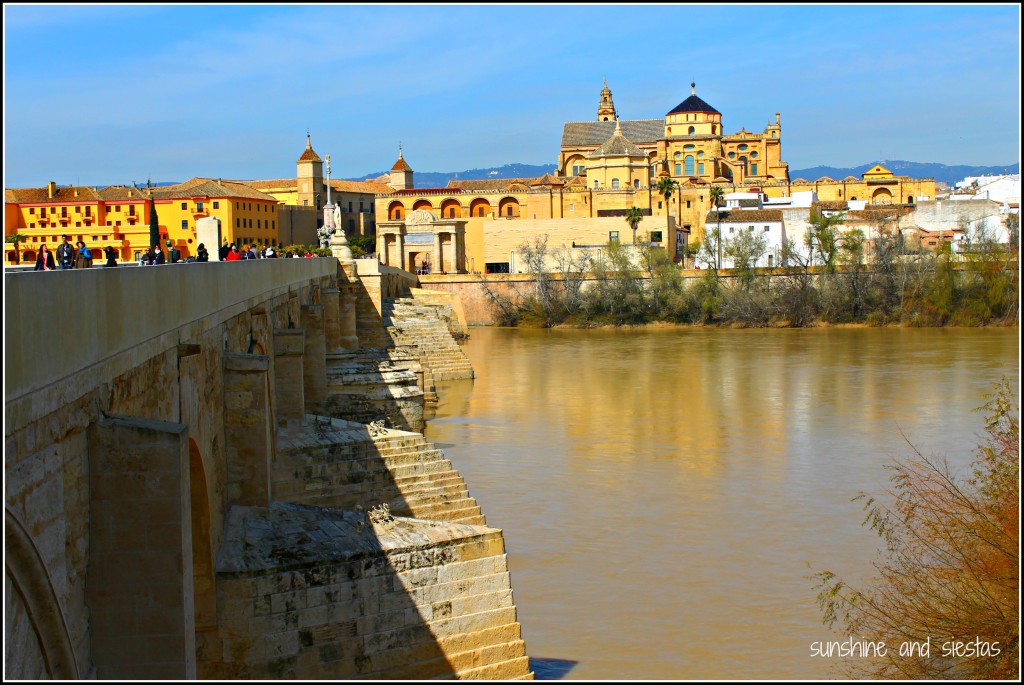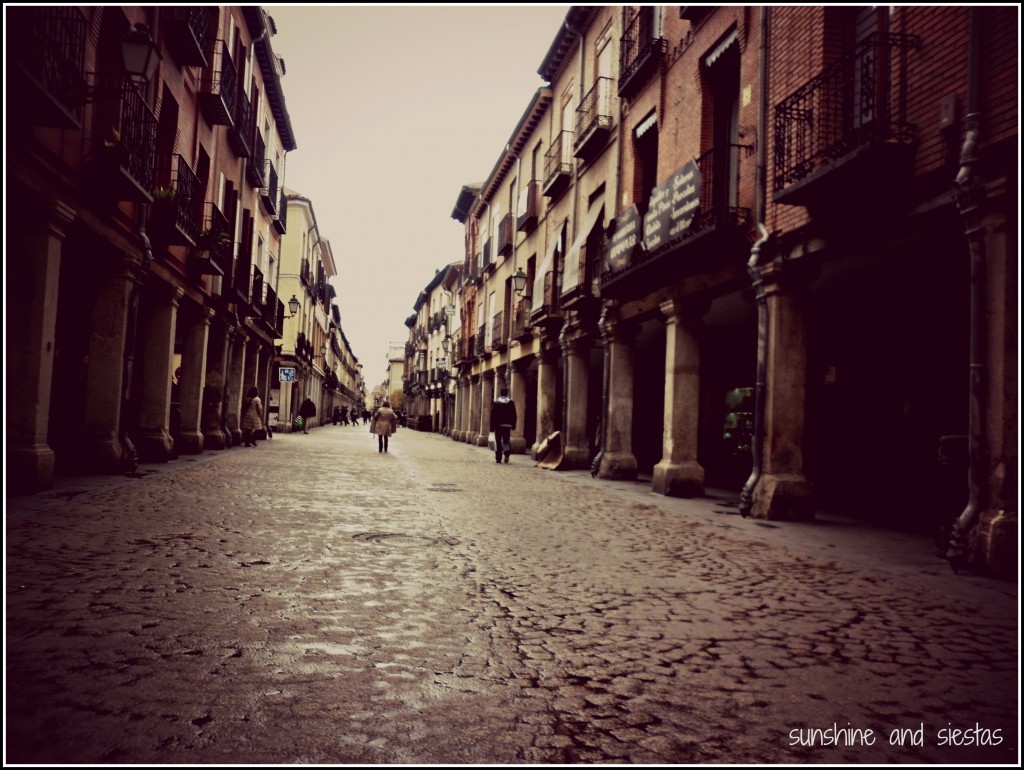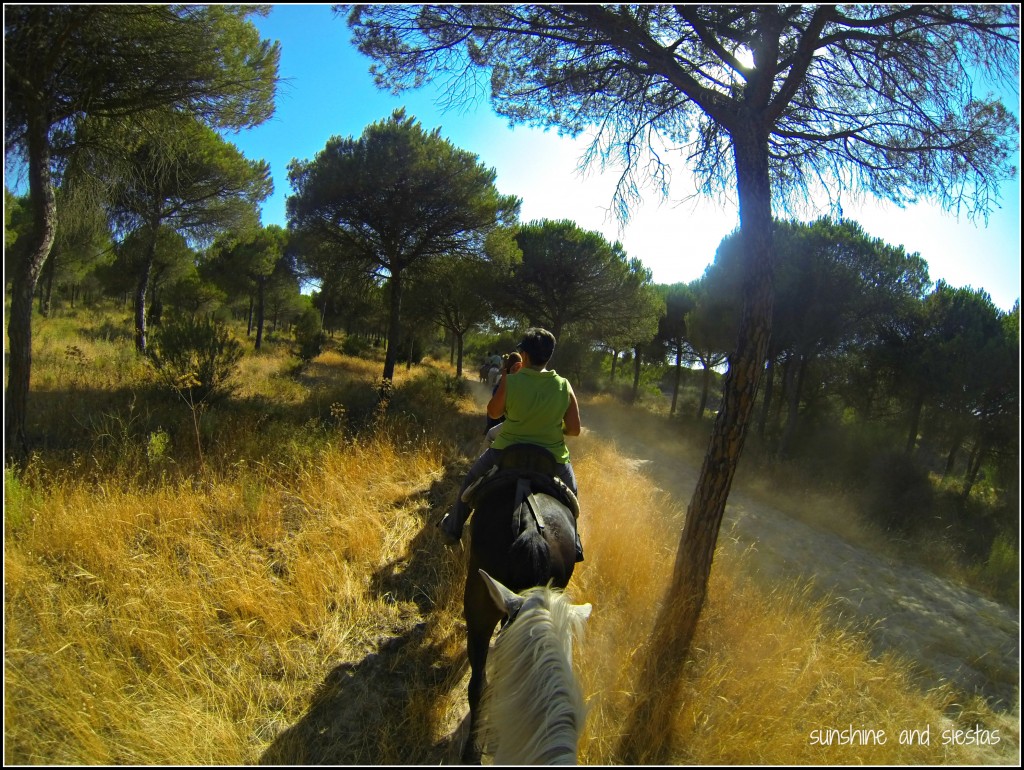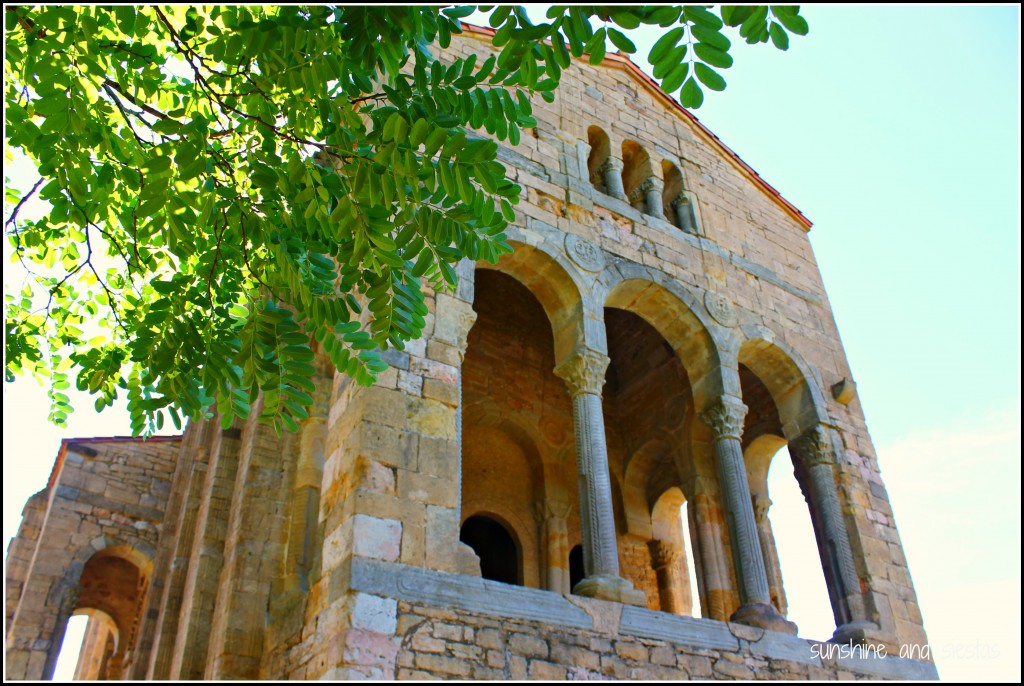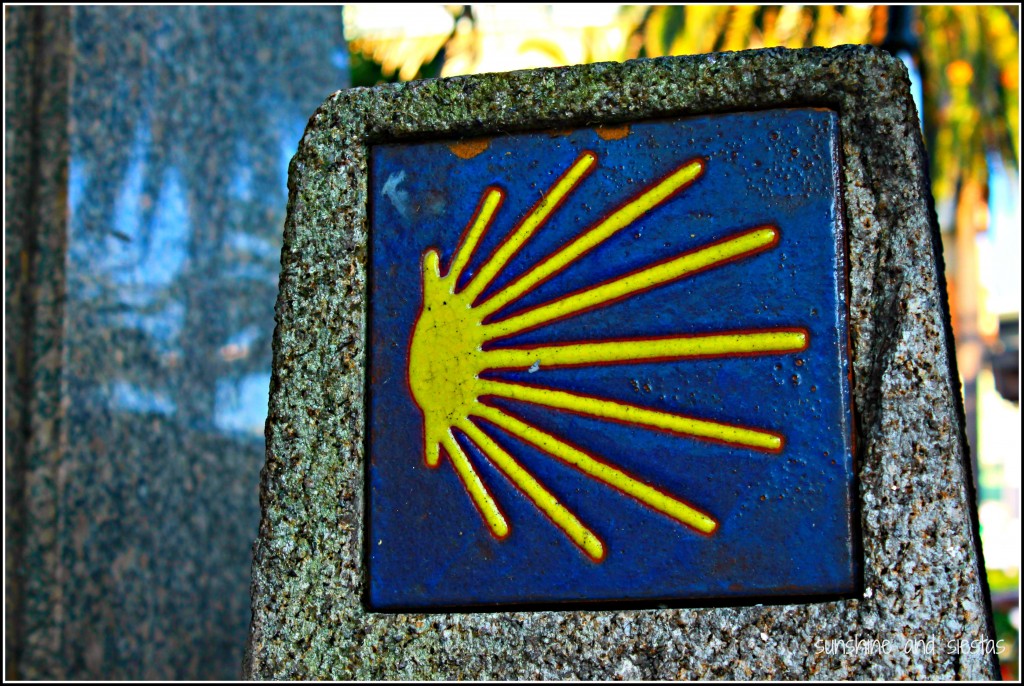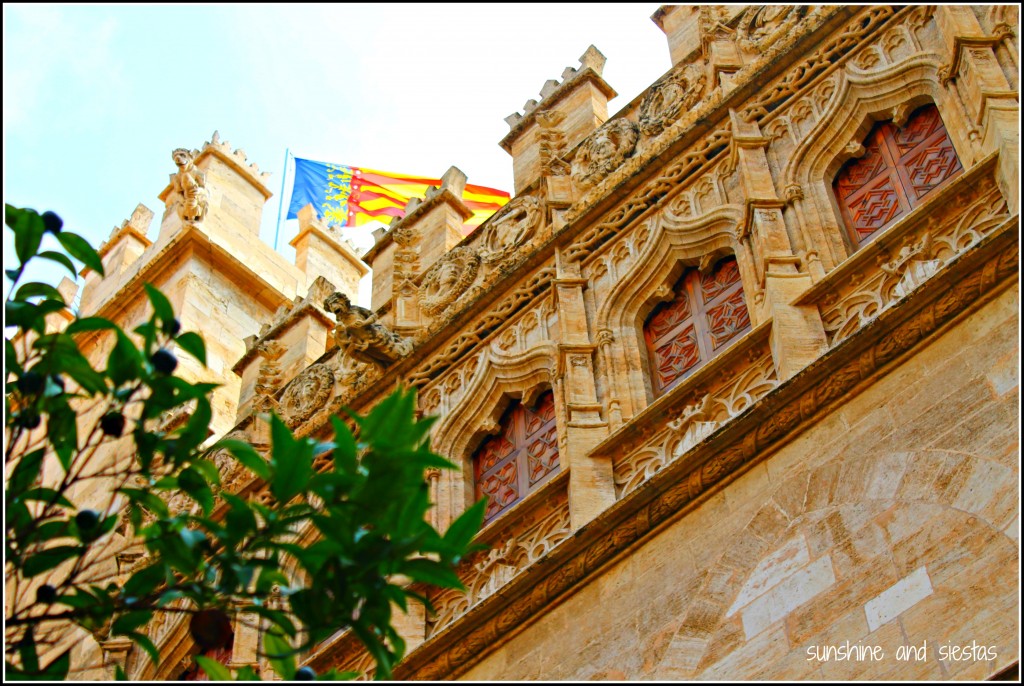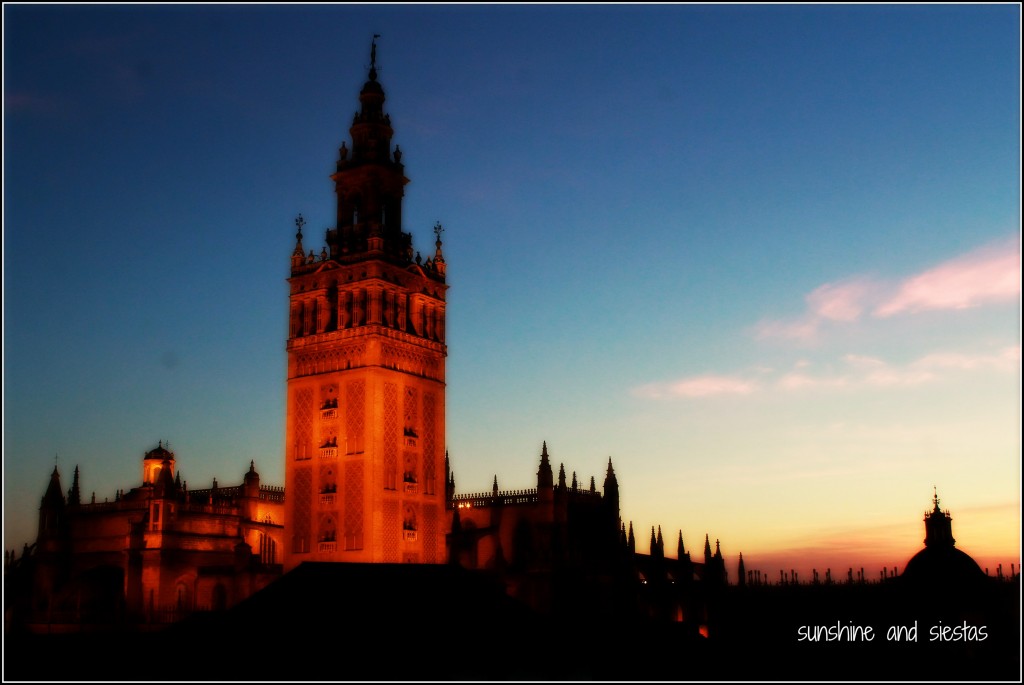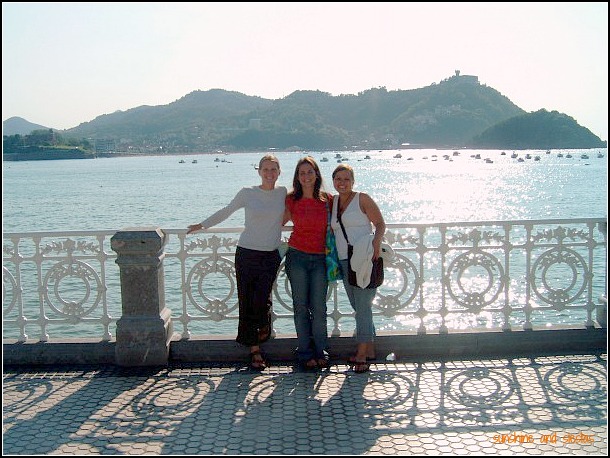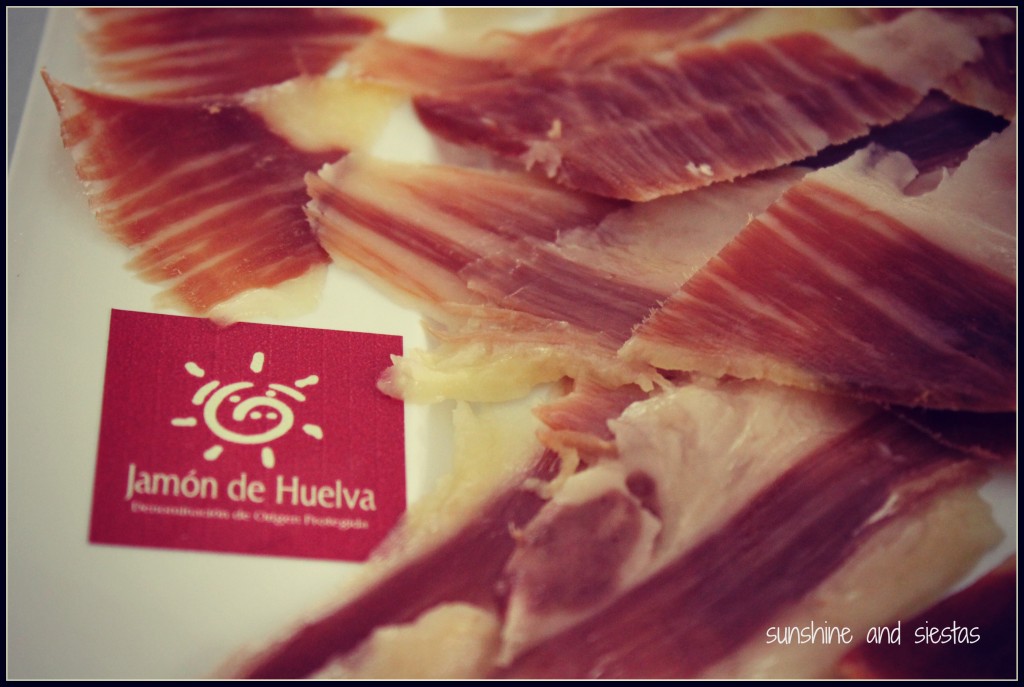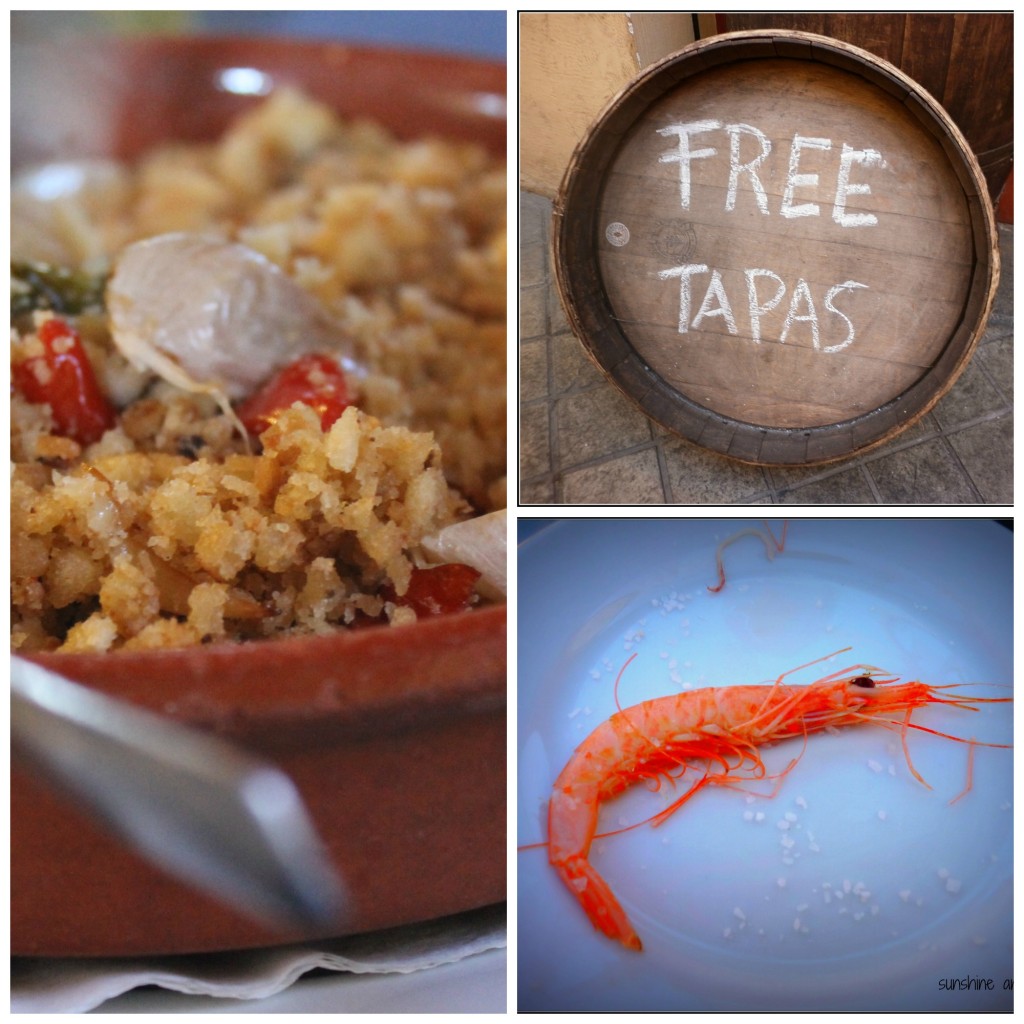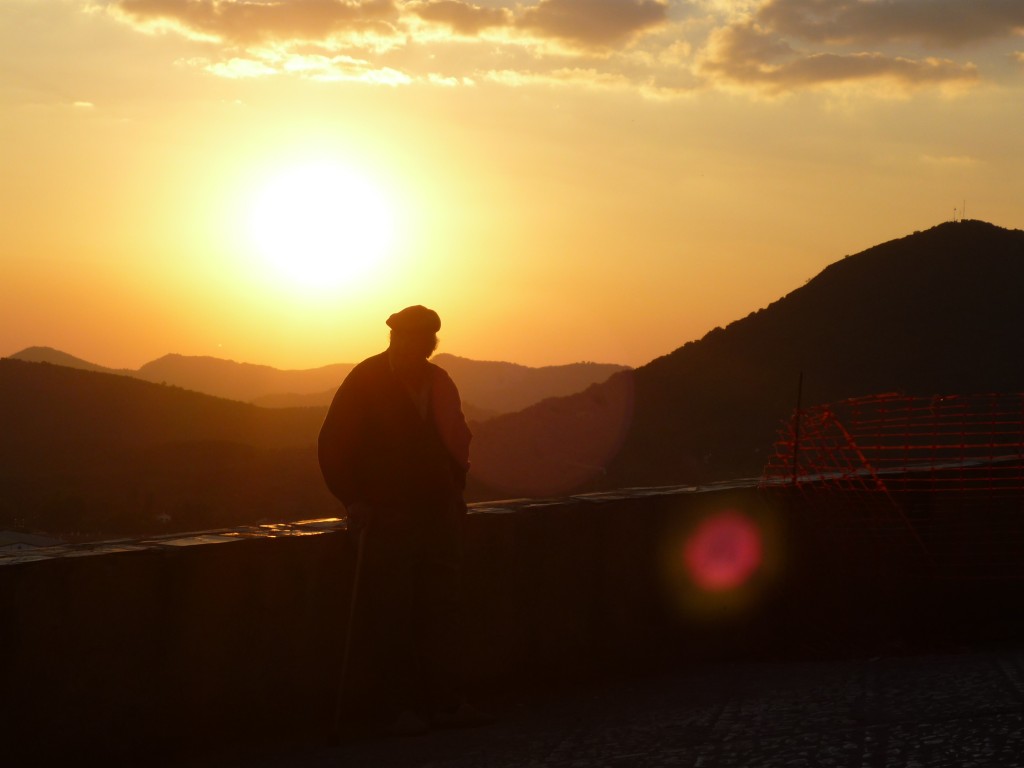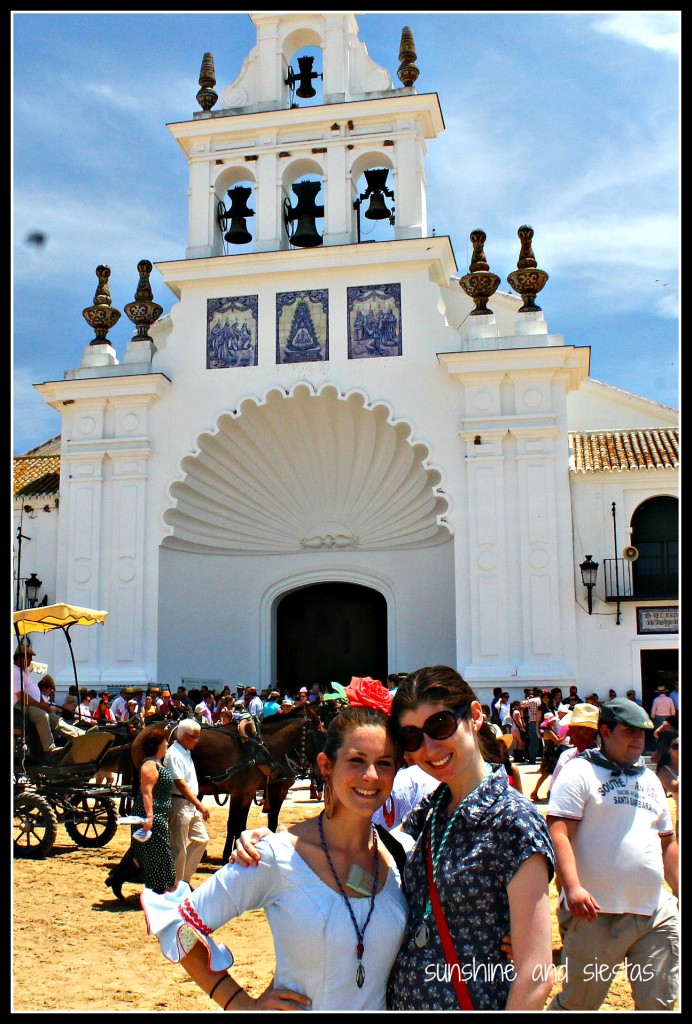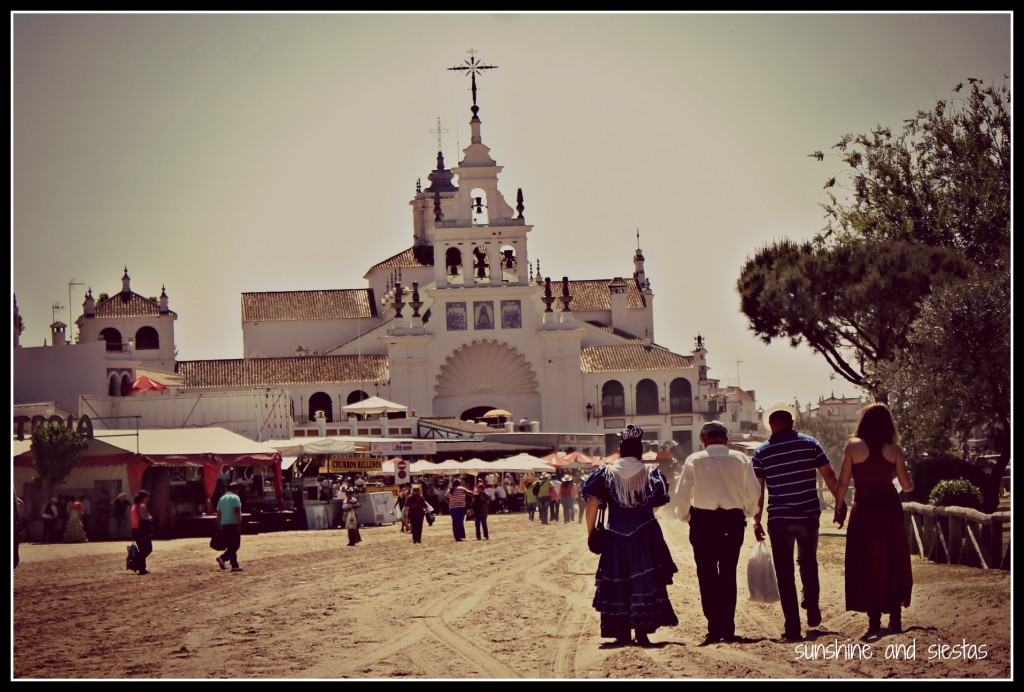The Megane steadily climbed out of Santa Cruz de Tenerife, past La Laguna and into the plush interior of the island. The pines and windy roads took me back to Colorado, but with an occasional glimpse of Atlantic waters.
Gua guas pushed up the hill slowly, and Forrest swerved around them, comfortable as he shifted into third in our rental car and rode the mountain up. Tenerife was formed by an underground volcano 30 to 50 million years ago, and its highest point, Teide, actually gives the island its name: tene (mountain) and ife (white), joined by an /r/ during the colonial period. The entire island is formed from volcanic rock, in fact, evident from the steep ride up and down, and the white-capped mountain is visible from seemingly every rincón of the largest island in the archipelago.
Once we reached the national park and UNESCO World Heritage site, we parked the car and took the gondola up the mountain. Most tourists don’t venture up to the top, standing nearly 3800 meters above sea level, despite Teide being one of the most visited sites in Spain. The landscape is almost barren, and the only sign off life we saw after starting our ascent were lizards.
Steep rock stairs have been carved into the rock face, but we still scrambled over boulders, stopping for vistas and water breaks every 10 steps because the air was so thin.
The great crater caused by multiple eruptions in visible from just about everywhere on the island, but seeing it from a bird’s-eye-view was insanely cool.
From the very top, you can see Gran Canaria to the east and la Gomera to the west. We actually hiked above the cloud level that covers the occidental side of the island, watching them get burned off by the warm midday sun.
If you go: Visitors can take the gondola up the mountain at the cost of 25€. If you want to hike to the top, you’ll need to print off an access pass on the national park’s main page. It’s free, but you’ll have to bring a form of ID.
Be sure to dress in layers, as it’s cold at the top, and wear comfortable shoes. Bring sunscreen, sunglasses and plenty of water, as there are no facilities after leaving the visitors center.
Have you ever visited a national park in Spain?
My rental car was graciously provided by Car Rentals UK. All opinions (as well as the memories of my stomach dropping during the hairpin turns) are my own.
